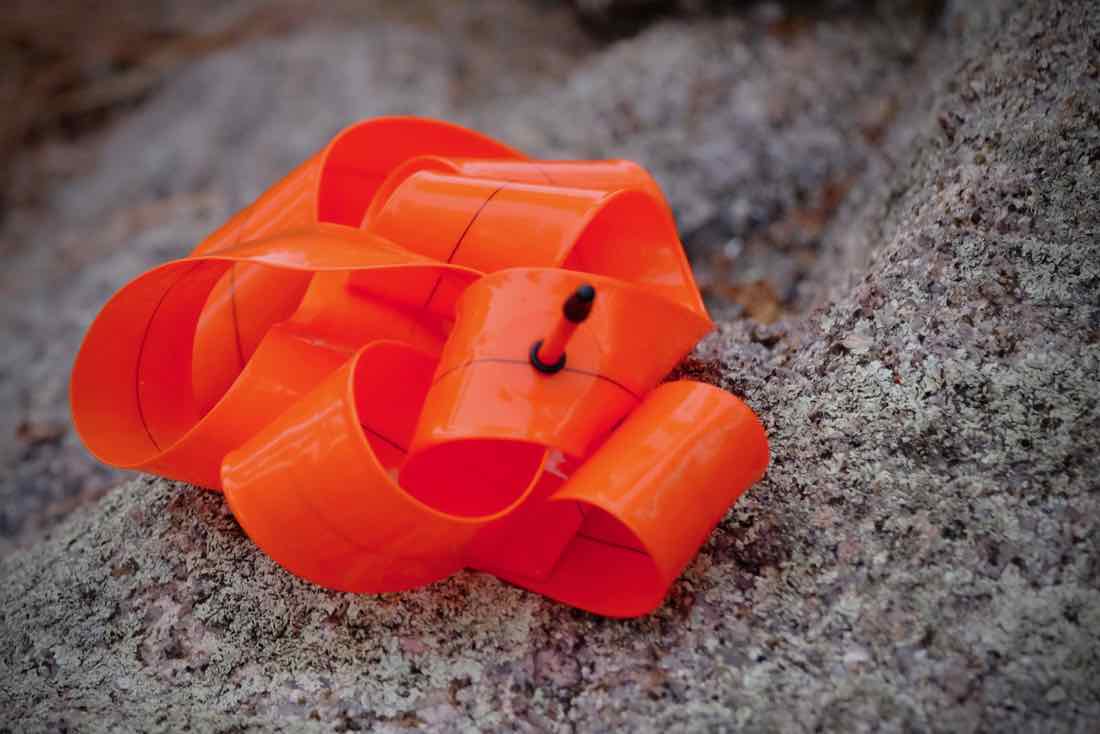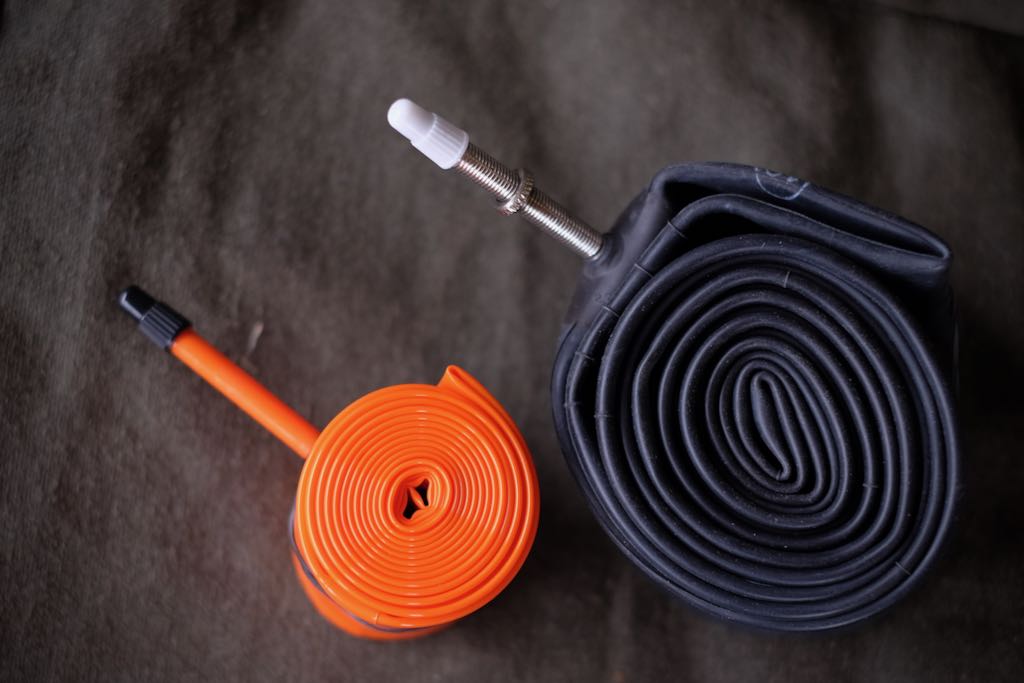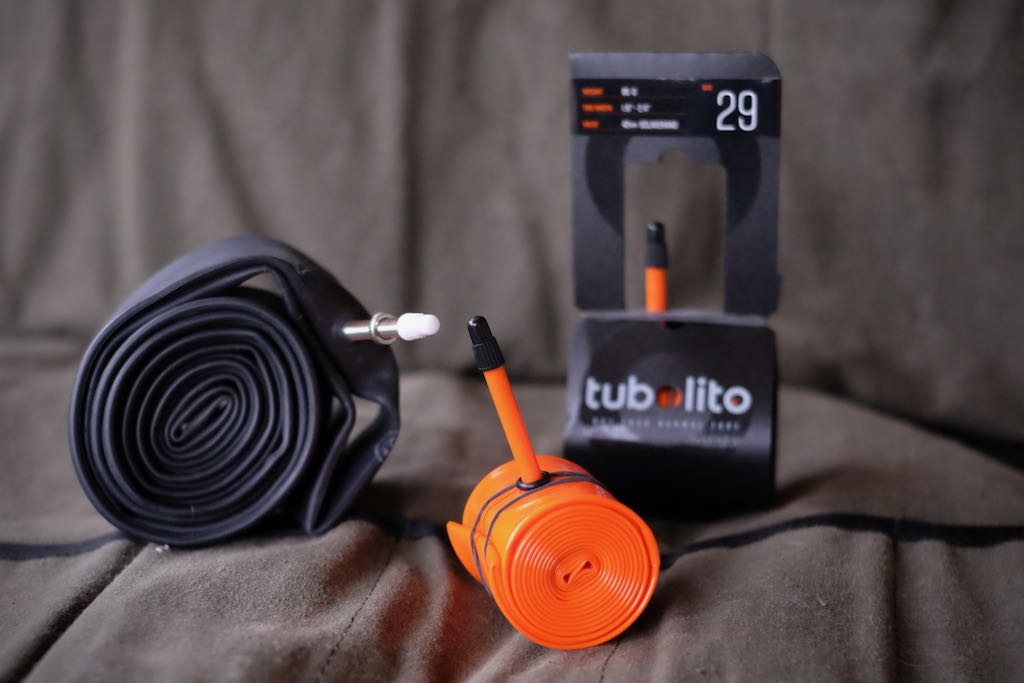During its 100 year-long lifespan, the humble bike tube has been made of natural rubber, latex, butyl blends, and in the early years was literally grown from cow intestines. Ick. The Austrian-made Tubolito Tubo, announced last year during the annual trade show circuit, is perhaps the most advanced bike tube ever created and is constructed of materials typically used in mobile phones.
When Tubolito founders Christian Lembacher and Akos Kertesz worked as engineers in the tech industry, part of their job was researching durable and lightweight membranes to implement in mobile phone speakers. As avid riders, they immediately saw the potential bicycle applications and after a lengthy period of R&D, the Tubolito Tubo was born.

The Tubo is not the first inner tube made of advanced thermoplastic elastomer. Schwalbe and Eclipse both launched hyper-light tubes in recent years, but they were almost too delicate and heat-sensitive to be of any practical use.
By contrast, the Tubo is billed as light and strong. Their proprietary material and unique manufacturing process yield a multi-layered tube they claim is twice as durable as a standard butyl tube. Their process eliminates a full-length seam and is joined with just a small weld around the circumference of the tube. The smaller seam reduces potential failure points. A Tubo is also 65% lighter and smaller than a traditional tube. Citing increased puncture resistance due to its highly elastic properties, they say the flexible thermoplastic resists pinch cuts and can even improve rolling efficiency over a butyl inner.

When they were announced last fall, Tubos garnered a fair amount of press, but few people since have logged many miles on them. But I have…
I received my 29-inch and 27+ Tubolitos in late November. Although I haven’t ridden with tubes in years, I popped them in and hit the trails. I have since put roughly 633.5 miles on them—give or take.

Installation
Because of the slick exterior and somewhat plasticized texture of the material, which is quite stiff, installing the Tubos is a piece of cake. They resist twisting and kinking and slide right into place with virtually no risk of pinching under the bead. Unlike latex tubes which can be awkward to wiggle into position, Tubos make for a quick insertion.
Trail feel
To be honest, I didn’t expect to feel a difference over my tubeless setup and to that end—I didn’t. For the sake of context, I might be able to discern the difference between a tubeless and a tubed tire, but just barely. From the standpoint of trail feedback and tangible ride quality, I would say the Tubo feels very much like riding with no tube at all.
Durability
Even as a desert dweller in the central mountains of Arizona where everything pokes and gnashes at tires, I don’t get many flats. I attribute that to my use of sealants, which Tubolitos do not support. That had me fearful of flats, but none were had—yet. I know a cactus needle can penetrate bone, so it will have no problems puncturing hight-tech Austrian thermoplastic.
Although I did flirt with pinch flats more than once, a pin-prick hole is bound to happen despite Tubolito’s durability claims. One disadvantage of Tubo’s material is the need to buy their proprietary patch kit at a cost of $15. Just for grins, I tried to stick a Park Tool pre-glued patch to a Tubo and it seemed to hold just fine over the last 300 miles.

Air retention
Unlike latex and race-grade butyl tubes, I was pleased with the air retention of the Tubolito thermoplastic. I would say it holds pressure as well as a sealed tubeless tire, or a tire fitted with a standard thickness butyl inner.
Ideal usage
As pleased as I am with the performance of the Tubo, it is still an inner tube. The incompatibility with sealants is the most noteworthy drawback. Given where I live and ride, it’s a deal-breaker, at least for regular use.
If they have one major advantage, it is their compact size and low weight. At 83 grams for a 29er tube, the Tubo sheds 185 grams from my spare tube weight. For long bikepacking trips I can carry two Tubes for less weight than one standard butyl tube. The tiny size is another considerable advantage. The tough membrane also resists abrasion allowing it to survive a rough and tumble life in my hydration pack as it bounces around with tools and supplies.
With an MSRP of $35, and given the patching and sealant limitations, I see the Tubo best used as a backup tube. In that capacity, it is light, small, installs easily, and has enough durability to get me rolling without me feeling like I’m limping home on a race-quality tube.
Available now throughout much of Europe, Tubolito is hopeful they will have their full range of road and mountain bike tubes on sale in North America in the coming months. Their offering includes multiple sizes across two weights of tubes. The light S-Tubo is a spare-only tube with a removable stem to help it back down as small as possible.
It’s hard to say if it is truly the lightest, fastest, smallest, and strongest tube on the market, but I wouldn’t hesitate to say it’s the most advanced tube of the last century. My words, not theirs.
